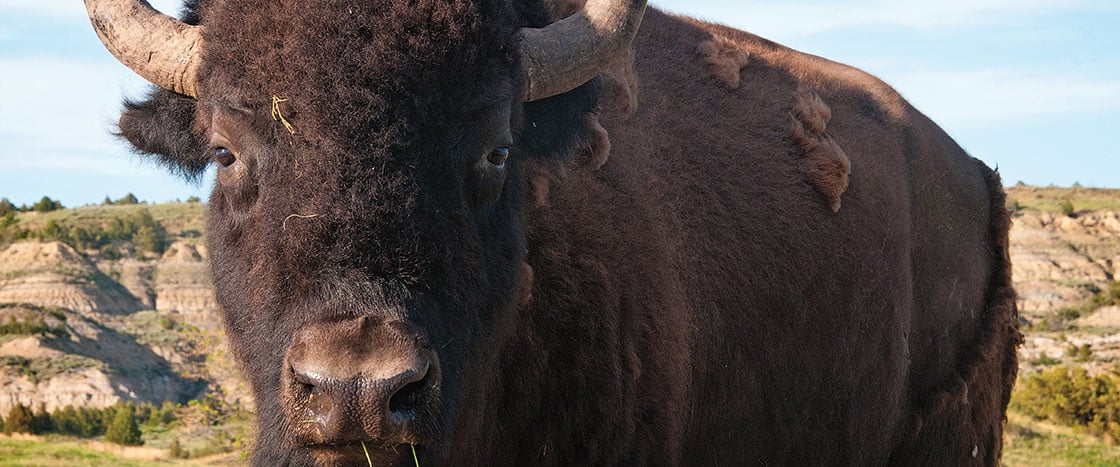Are you ready to take a trip back in time to the early 1800s? You’re somewhere in the middle of the United States, where the land is flat and covered with grass so tall it tickles the top of your head. Watch your step—there are rattlesnakes everywhere. And don’t trip over a prairie dog hole—you could break your leg.
Thousands of people live in this area, members of different American Indian tribes like the Pawnee and the Lakota. But this land is enormous. You could wander for days and not see another person. And right now, you’re all alone. All is quiet except for the whisper of rustling grass.
But then . . .
The ground shakes. A deep rumble reaches your ears and makes your heart skip a beat. At first, all you see is a cloud of dust.
Tornado! No. Keep looking.
Tsunami! No. Remember, you are hundreds of miles from any ocean.
Train! No. Those won’t come to this part of America for another 50 years.
The sound gets louder. And now you see it—an enormous herd of animals. There must be hundreds of them, maybe thousands! And they’re huge—bigger than a horse, covered with shaggy fur.
Escape before you’re trampled to death!
Poof!
Just in time, we’ve brought you back to 2021. But now you’ve had the honor of seeing one of the most important animals in the history of North America: the buffalo. More than 30 million of these majestic beasts once ruled the continent.
But wait. Why don’t you see any buffalo today? Where are the giant herds?
The answer: They’re mostly gone. Around 100 years ago, buffalo almost became extinct.
How is that possible? How could 30 million giant animals disappear?
Let’s take a trip back in time to the early 1800s. You’re in the middle of the United States. The land is flat and covered with tall grass. Watch your step! There are rattlesnakes everywhere. And don’t trip over a prairie dog hole.
Thousands of people live in this area. They are members of different American Indian tribes like the Pawnee and the Lakota. But this land is big. You could wander for days and not see another person. Right now, you’re all alone. But then . . .
The ground shakes. A deep rumble reaches your ears. At first, all you see is a cloud of dust.
Tornado! No. Keep looking.
Tsunami! No. Remember, you are hundreds of miles from any ocean.
Train! No. Those won’t come to this part of America for another 50 years.
The sound gets louder. Now you see it. It’s a herd of animals. There must be hundreds of them, maybe thousands! They’re huge. They’re bigger than a horse, covered with shaggy fur.
Hurry—escape!
Poof!
Just in time, you’re back in 2021. But now you’ve seen the buffalo. The buffalo is one of the most important animals in the history of North America. Once, there were more than 30 million of these majestic beasts.
But wait. Why don’t you see any buffalo today?
Because they’re mostly gone. Around 100 years ago, buffalo almost became extinct.
How is that possible?

